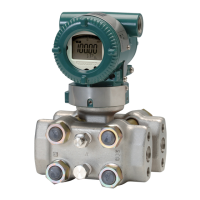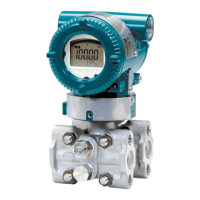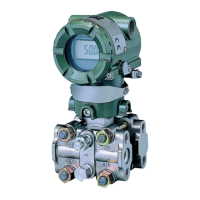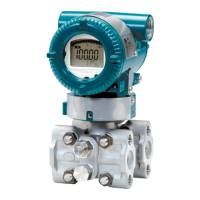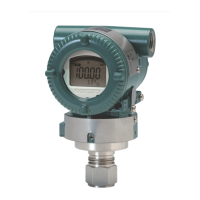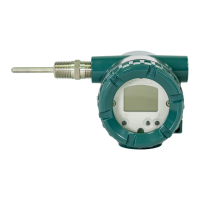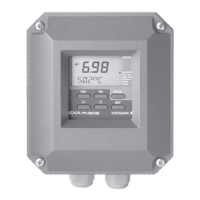<4. Diagnostics>
4-3
IM 01C25T01-06EN
(5) Conguration Change Counter
The Conguration Change Counter is
incremented once for every user action
that changes the device’s conguration or
calibration. This value is never reset or written
and maintained even if power is removed from
the device.
• Procedure to call up the display
DD and DTM [Root Menu] → Diag/Service →
Test device (DD only) → Status →
→ Cfg chng
count
The conguration change times
are counted. The counted value
cannot be reset.
(6) Reset Conguration Changed Flag
Conguration Changed Flag can be reset by
this method.
NOTE
Refer to Conguration Changed (0x40) in the
Table 4.7.
• Procedure to call up the display
DD and DTM [Root Menu] → Diag/Service → Test
device (DD only) → Status → Reset
Cfg Chng ag
4.2 Advanced Diagnostics
(Only for EJX series)
EJX
4.2.1 Multi-sensing Process Monitoring
Multi-sensing process monitoring function (option
code: /DG6) provides the advanced diagnostics
to detect the abnormal conditions in process
environment such as an impulse line etc. by using
the EJX multisensing technology and its unique
algorithm. There are following two functions.
Impulse Line Blockage Detection (ILBD)
The uctuation change of dierential pressure and
static pressure is monitored by a silicone resonant
sensor and detects a potential blockage condition.
The dierential pressure transmitter gives also a
result of which pressure-side was plugged.
Heat Trace Monitoring
The two temperature sensors built in the transmitter
calculate the ange temperature, the change of
which enables to detect the heat trace breakage or
the abnormal temperature due to the failure.
4.2.2 Impulse Line Blockage Detection
(ILBD)
ILBD is carried out by using statistical analysis
based on the measured values of process
uctuations that exist in a uid. An alarm on the
transmitter LCD display or an analog alert is
generated if blockage reaches a certain level.
The transmitter provides the following results as
blockage detection.
(1) A Blocking and B Blocking
These are blockage detections based on
the uctuation value change of dierential
pressure/pressure. With a dierential pressure
transmitter, each result indicates that both or
single side is plugged.
(2) L Side Blocking
It is a low-pressure side blockage detection
based on the change of BlkF or low-pressure-
side uctuation value.
(3) H Side Blocking
It is a high-pressure side blockage detection
based on the change of BlkF or high-pressure-
side uctuation value.
*: BlkF indicates blockage degree characterized
by a comparison of the high- and low-pressure-
side uctuation values. For the details, refer to
Figure 4.2.2.
IMPORTANT
• The pressure uctuation amplitude in uids
must be suciently large for blockages to be
detected.
• If the pressure uctuation amplitude is too
low for a reference value to be obtained,
blockages detection operation cannot be
performed with an alarm that the reference
value is invalid.
• The pressure uctuation amplitude may
decrease due to other causes unrelated with
a blockage according to process condition. In
above case, a false alarm of an impulse line
blockage may be generated. Before taking
action in response to a blockage alarm,
consider the plant operating conditions.
Notes for Pressure or Level
Measurement
With pressure or level measurement, the pressure
uctuation amplitude may reduce especially for the
following cases.
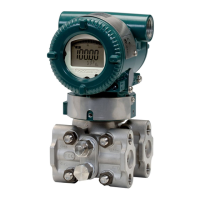
